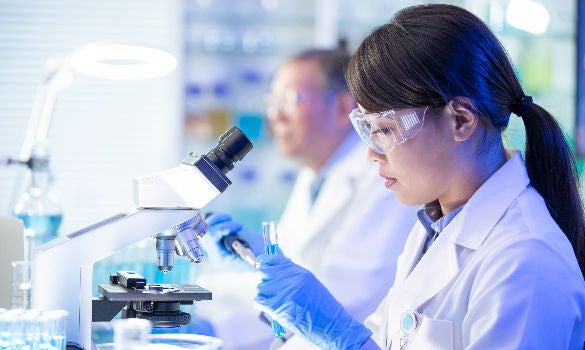
Breast biopsies are commonly requested for, sometimes for a mass and sometimes arising from breast screening. Often, the patient may wish to discuss more with their general practitioner (GP) or breast surgeon before agreeing to the biopsy.
Understandably, the patient may be rather anxious at this point. Thus, this list of commonly asked questions and suggested answers may be useful to GPs in guiding them through the biopsy journey and alleviating their concerns.
Top 8 Commonly Asked Questions and Suggested Answers
1. WHY IS A BREAST BIOPSY NEEDED?
A biopsy of the breast may be necessary if the patient has symptoms such as a solid breast lump or other signs of breast cancer.
The biopsy may be performed freehand if it is large enough, but may also be image-guided for better accuracy in smaller lesions.
A small amount of tissue is removed to be analysed by the pathologist. If the sample is cancerous, the hormone receptor status in the pathology report can provide information on the treatment options for the patient.
Biopsies are also recommended when:
There are unusual findings on a mammogram, ultrasound or other breast imaging
The surgeons or radiologists are not absolutely certain that the findings are benign
2. WHAT IS THE DIFFERENCE BETWEEN A CORE VERSUS VACUUM-ASSISTED BREAST BIOPSY?
Both procedures can be performed under image guidance and are commonly done with ultrasound guidance.
A core biopsy device only takes one sample at a time and will have to be reinserted into the breast each time.
A vacuum-assisted core biopsy utilises vacuum assistance to help suction in the adjacent breast tissue for sampling. Thus, it can take numerous samples continuously without the need for reinsertion, and often removes the entire small lesion.


3. WHICH TYPE OF BREAST BIOPSY IS PERFORMED ON A PATIENT?
This will depend on the size and imaging characteristics of the lesion to be biopsied.
Typically, we recommend an ultrasound-guided core biopsy for a sizeable palpable mass that is visible on ultrasound. However, sometimes a vacuum-assisted biopsy is recommended if the lesion is very small.
The breast radiologist will review all the patient’s prior imaging to make the appropriate biopsy recommendation.
Sometimes, a tiny breast biopsy marker made of titanium will be necessary to mark the biopsied area, which will not set off any airport alarms and is safe for future MRI scans if needed. The patient should not be able to feel the biopsy marker after it has been placed.

4. ARE BREAST BIOPSIES VERY PAINFUL?
Generally, the breast biopsy is performed under local anaesthesia which numbs the skin for the expected half hour of the biopsy, and is generally tolerable.
5. WHAT ARE THE POST-BIOPSY CARE INSTRUCTIONS?
The biopsy wound is normally only about 5 mm wide with either Steri-Strips or a topical skin adhesive for wound opposition, so no stitches are involved and the small scar will slowly fade away with time.
We ask patients to keep the area clean and dry for at least 24 hours. When necessary, patients are informed to keep the compression bandage on for 24 hours.
The patient should return to breast imaging for evaluation during working hours, or the emergency department after office hours, if:
- There is continued fresh bleeding through the bandage
- There are signs of infection such as fever, swelling, erythema and warmth
It is expected to have a small haematoma post-biopsy or even bruising, depending on the size of the area biopsied.
6. WHAT IF THE BREAST TISSUE IS VERY THIN? CAN BIOPSY BE PERFORMED?
If the breast tissue is very thin, the patient may not be able to undergo a stereotactic biopsy safely.
If we are able to visualise the abnormality on ultrasound, it can be sampled with ultrasound guidance. However, if it is not visible on ultrasound, the patient is referred to a breast surgeon for surgical excisional biopsy.
7. WHAT IF THE MASS IS TOO CLOSE TO THE CHEST WALL OR SKIN SURFACE?
If the mass is very close to the chest wall or skin surface, we may still safely biopsy by using hydrodissection (injection of fluids) to create a safe plane between the skin and mass, or to lift up the mass from the chest wall to facilitate the biopsy.
These preparations will be done by the experienced breast radiologist interventionist.
8. WHAT IF THE PATIENT IS ALLERGIC TO CONTRAST?
We do not use iodinated contrast for routine breast biopsy procedures, therefore it is generally safe for such patients to undergo biopsy.
If the patient is recommended to obtain an MRI-guided biopsy procedure, the contrast we use is gadolinium, which is different from iodinated contrast in CT imaging studies. The biopsy technique using contrast-enhanced mammogram is rather new locally and not often used.
REFERENCE
1. SingHealth Duke-NUS Breast Centre. Your Breast Health Booklet, Making Informed Choices. Jan 2018. Accessed from: https://www.singhealth.com.sg/patient-care/patient-education/breast-health
Dr Tammy Moey is the Director of Breast Imaging and Senior Consultant with the Department
of Diagnostic Radiology at Singapore General Hospital and a Visiting Consultant at
KK Women’s and Children’s Hospital. Her clinical specialties are in breast imaging and
breast intervention, and she also has an interest in mentoring future leaders in radiological sciences.
GPs can call the SingHealth Duke-NUS Breast Centre for appointments at the following hotlines or click here to visit the website:
Singapore General Hospital: 6326 6060
Changi General Hospital: 6788 3003
Sengkang General Hospital: 6930 6000
KK Women’s and Children’s Hospital: 6692 2984
National Cancer Centre Singapore: 6436 8288













 Get it on Google Play
Get it on Google Play